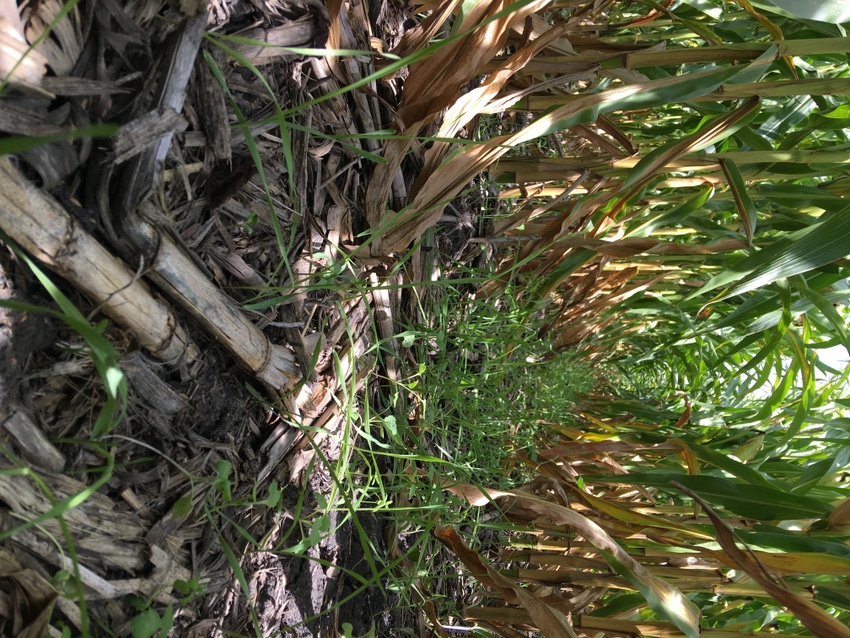
It’s that time of the year; cover crops are on the minds of many as we start harvest and plan for next year. The biggest challenge is finding the right window to seed cover crops and the second is getting precipitation for establishment, says Ryan Haden, Ohio State University soil scientist.
Haden says while some success depends on your method of planting, it all comes back to the precipitation. Haden has studied cover crops success rate using both broadcast and interseeding. One species that has done pretty well with both is cereal ryegrass.
Seed before harvest
Using a drill after harvest provides greater certainty in an average year to build good covers across fields. However in a dry year, there is no foolproof plan to get results.
Another strategy that producers should consider is seeding before corn or soybeans are harvested. Flying on seed into cornfields as dry down is occurring helps catch early fall rains to improve establishment.
Highboy rigs are another method to incorporate cover crops in your system—simply by modifying the rig with an air seeder to combine seeding with foliar fungicides or nitrogen application in mid to late summer.
Species success
Haden says knowing what cover crop you need in your fields is key to achieving the goals you set for your use of cover crops. He recommends perennial ryegrass, low growing red clover or annual ryegrass to producers if erosion is what they are trying to repair in their fields. They can establish good ground cover and reduce the amount of soil lost. And if nitrogen fixation is the issue, take a look at legumes including clover, field peas or even hairy vetch.
For compaction, he says using radishes in your fields can help. By planting radishes directly into the soil, not broadcasting, it gives the plants a better chance to grow and spread across the field. In a dry year, the radishes may not make it to the growing stage.
Termination and cost factors
Another way to ensure success with cover crops is to understand the termination method. Learn if winter kill, herbicides or tillage will eliminate these beneficial covers. The other key is when to kill them.
Farmers must have realistic expectations, Haden says. This means not expecting a great return on the investment in one year of use. It’s a long-term investment and the benefits may take a while to see.
He recommends considering the entire cost of the cover crops including the seed, labor and termination. “None of these should be deal breakers as the benefits may not just be yield increases in the future,” says Haden.
About the Author(s)
You May Also Like




